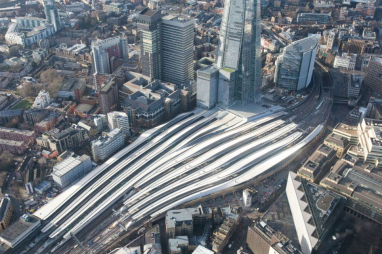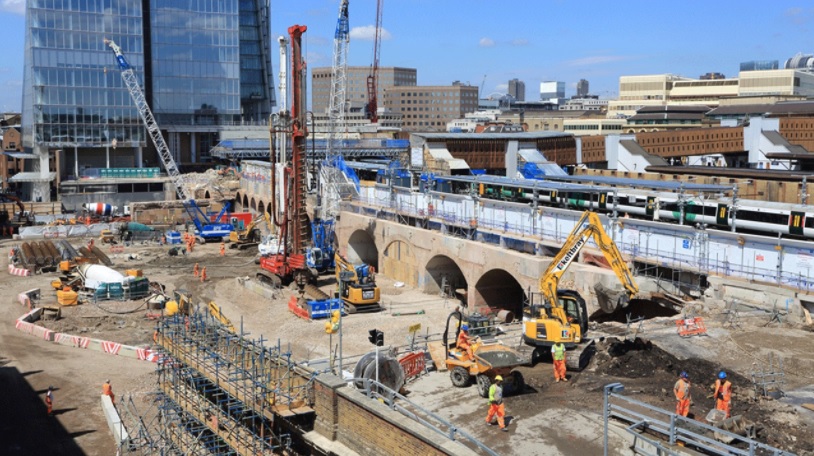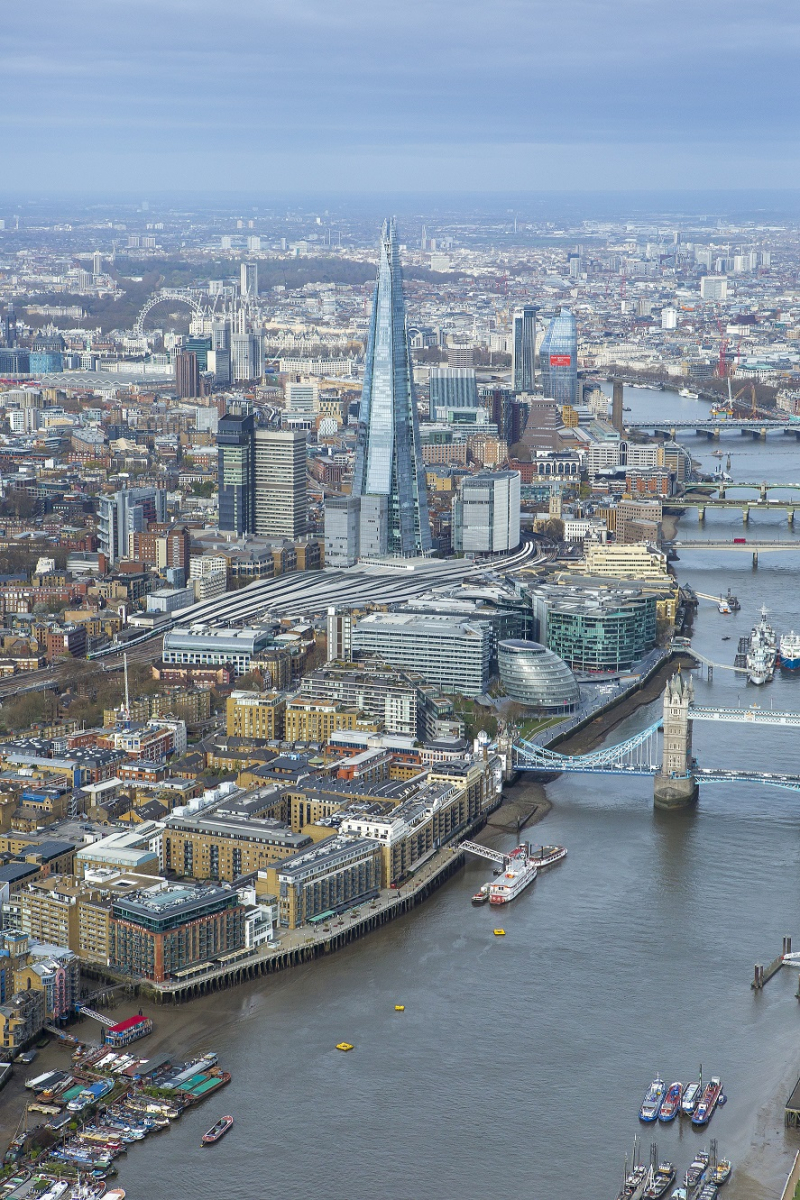
“Open-heart surgery” delivers a new London Bridge station
Designing and constructing major infrastructure projects is far from easy.
But imagine being tasked with completing the redevelopment of a 180-year-old station while ensuring some of the country’s biggest train operators continue to run services and more than 50 million commuters still enter through its doors every year.
That is exactly the predicament a cross-section of architects, designers and contractors faced when carrying out the £1bn transformation of London Bridge station. The work at London’s fourth busiest station is part of Network Rail’s £6.5bn wider Thameslink Programme and one of the most complex and ambitious rail station redevelopments in the UK.
The official opening took place in May. The upgrade work which began in 2013 can be sectioned into stages, but years of meticulous planning started back in 2008 to ensure the station could still be operational as sections were ticked off usually in 18-month segments.
Now complete, passengers can benefit from new trains running every two to three minutes through central London in peak hours and a fit-for-purpose new station which should meet the needs of passengers. The fundamental aim of the project was to increase capacity and this has been achieved by creating new platforms, building a new concourse, and developing a bigger and better station for passengers.
The plan behind the programme was to remodel the track and platform layout from nine terminus and six through platforms to six terminus and nine through platforms. The redeveloped station is now capable of coping with 75 million passengers a year.

When Network Rail first proposed the Thameslink Programme to transform north-south travel through London, there was little idea of how it could be achieved due to the many complexities teams would face. To overcome the huge number of challenges, success would only be guaranteed through close collaboration, innovative thinking and a nine-stage process which needed to be adhered to at every point.
The staging involved demolishing the old platforms and a proportion of arches below the platforms and then progressively reconfiguring the tracks to construct the new station in nine stages, each section of which had to come into service before the next stage can commence to avoid the overall schedule overrunning.
Design leaders from WSP have been part of the process from the beginning. Technical director David Carter explains how the remit was to find a way of delivering the new station while ensuring London Bridge remained open so the travelling public could still use it.
It was Carter who came up with an idea central to the progress of work. He floated the suggestion to have non-stopping train services through London Bridge which could allow work to be completed in certain sections.
"Program is king. Anyone from Costain, to someone signalling for Siemens, or laying the track from Balfour Beatty needed to buy into it and hit the dates in the staging process."
David Carter, WSP technical director.
Commenting on the idea, Carter said: “We asked whether having non-stopping services on the Charing Cross and Cannon Street services at the same time was possible but understandably this was politically unacceptable and not viable for the train operators. After discussions, Network Rail came back and said it might be possible if we kept one at a time running. These discussions were a key development in the first two years as it allowed us to push onto station designers that not only is this the structure but this is what you need to be doing at the various stages of the process.”
The idea of having these non-stopping services was responded to with a certain level of scepticism by Network Rail and the Department for Transport (DfT) on whether this was a credible case and whether enough passenger capacity could be proved.
“We had to look at passenger footfall, how the station operates and whether any minor infrastructural changes at other stations could be made. The non-stopping services were met with a level of resilience but it was our job to prove how we could make it work. The last thing Network Rail and the train operators want is to say yes that’s a great idea and then six months down the line have the media writing stories of Charing Cross in chaos with the barriers and entrances closed because they are flooded with people.”
But like any redevelopment of this size, a number of construction and civil engineering challenges were encountered. A common description used by those involved was “performing open-heart surgery on a patient that is jogging”.
To overcome road bumps in the process, communication and collaboration with all the workers, stakeholders and train operators was immensely important. WSP was the lead consultant in a joint venture with Arcadis, working for main contractor Costain, Network Rail, Balfour Beatty Rail, Siemens and Grimshaw, the original architectural team.
Employees working on the station were located in one office next to the station, with the design team peaking at more than 240 full-time equivalent staff at any one time.

Adrian Tooth, a design director for WSP, said it was the best co-working environment he has experienced during his career. “I have worked in other co-located offices before, but this was the best in terms of levels of engagement and speed of communication. Anything that is highly complex in nature is always potentially going to be difficult to achieve so the way you work your way through any challenges is to ensure you are working very closely together. A phrase that was coined to demonstrate this was “stand and talk, don’t sit and send” which summed up the principle of going to find the person you needed so you could not only talk through it but draw through it.”
Tooth’s thoughts are echoed by Carter who said that only by all parties buying into the delivery dates could London Bridge be kept to schedule.
“Program is king,” Carter adds. “Anyone from Costain, to someone signalling for Siemens, or laying track from Balfour Beatty Rail, needed to buy into it and hit the dates in the staging process, as if one doesn’t then it pushes the whole strategic programme out. It’s a massive piece of work which everyone bought into because they knew that them being late down there, screws everything else up here.”
Another important principle from the start has been to retain some of the Victorian heritage of the station which has brought back some of old structural assets into public vision.
Tooth said: “The station’s original Victorian features have been sympathetically incorporated within the final design where possible. Part of the planning conditions meant historic elements of the station had to be retained but there were some parts where this couldn’t be achieved and they were recorded in lots of detail with the Museum of London. The new design pays homage to its Victorian roots and existing arches have been brought back into public vision after most of them being hidden away for about 100 years. Wherever we could we tried to re-purpose and re-use.”
The project has been hailed by those involved as a major success with many milestones hitting schedule along the way. In August 2016, teams celebrated the delivery of the second stage on time, with two-thirds of the street level concourse and three new through track platforms opened. The start of the year also saw the final section of the new concourse open along with the final five platforms after ten days of major engineering work. The concourse measures up larger than the pitch at Wembley and united all 15 platforms for the first time.
Summarising the success of project, Carter believes the teams can be proud that they managed to avoid a train operator’s nightmare of changing the timetable monthly during the length of redevelopment.
He added: “When you look on the whole over a five-year period, there was only three fundamental changes in service pattern and when you consider there are four service groups running through and each one only affected once through the process that’s quite an achievement, especially due to the complexity of the work.”